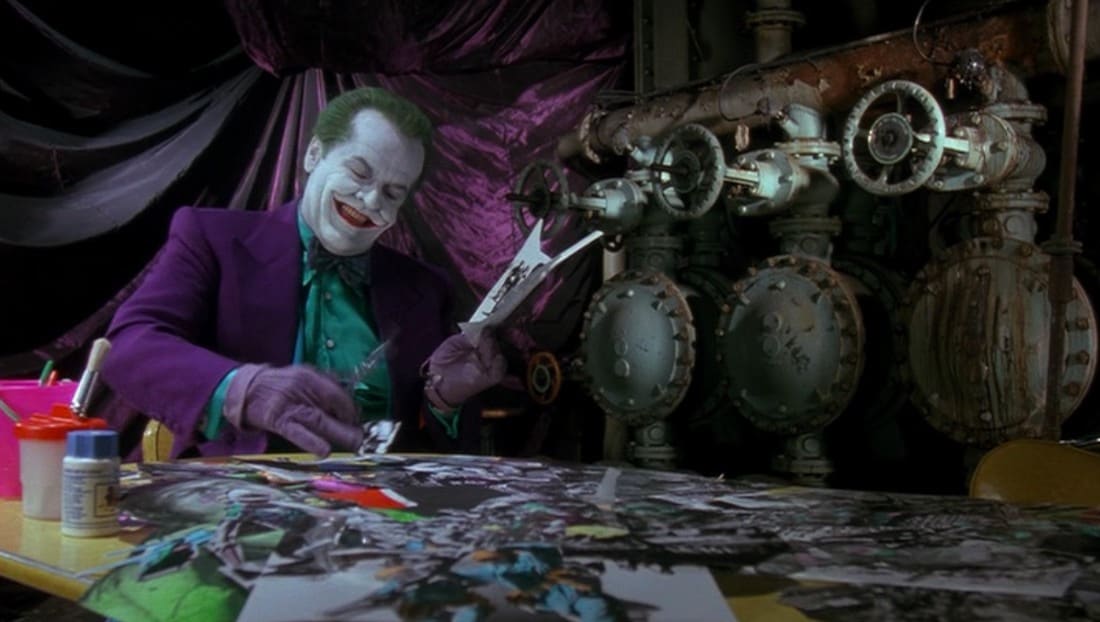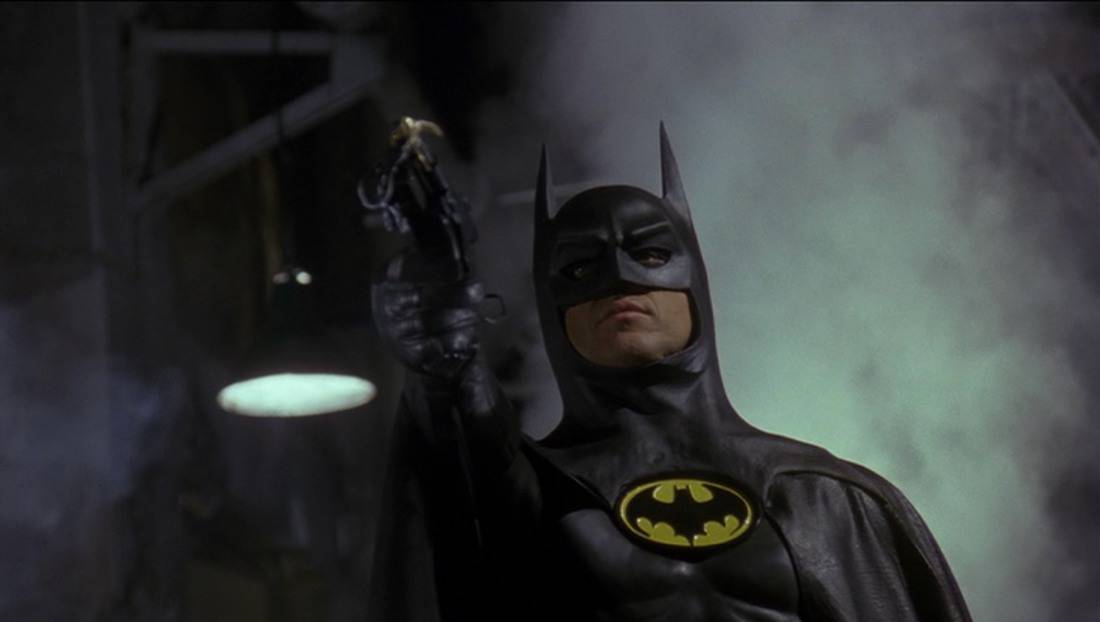The amount of complaining and arguing whenever something related to superhero films is announced is incredible. Director, cast, source material— it doesn’t seem to matter. There’s always a vocal and angry contingent who cannot be pleased by even the most benign super-related information, and they absolutely lose their shit over the big stuff. James Gunn being fired. James Gunn being rehired. Runtimes. Heath Ledger being cast as the Joker. Jared Leto being cast as the Joker. Joaquin Phoenix being cast as the Joker. Just wait until they cast the first black Superman, that’ll be a fun day on the internet.
Above all else, the thing that seems to get the toxic fans champing at the bit the most is a deviation from their beloved canon. They push their masking-taped glasses up the bridge of their nose, and, in their best Comic Book Guy voice, protest that they didn’t do that in the comic, that they wouldn’t do that in the comic, that that’s not how it is in the comic. But — apologies to Richard Donner — the thing is the granddaddy of all superhero blockbusters, the film that started it all, the ancestor of all the gritty, serious, faux-adult superhero content we have today didn’t give a damn about canon. It just wanted to be an entertaining movie.
When most people think of Batman (1989), they think of Jack Nicholson‘s iconic take on the Joker (possibly the only casting of a live action Joker not met with protest). But if you’re a comic book fan, you know that most of his character might as well have been invented out of thin air with how little it resembled the source material. While the Joker’s origins are always clouded in mystery and misdirection, Tim Burton‘s Joker is first Jack Napier, a capo in a Gotham crime syndicate who, as a younger thug, murdered Bruce Wayne’s parents in a botched robbery.

This connection to the young Wayne is a serious deviation from the DC canon, but it works so well on screen that it’s almost become its own canon in the years since. It gives Bruce a reason to hate the Joker. Not just as some kind of justice-obsessed nutcase, but as a rich kid who grew up with everything except for the parents that were taken from him by a gun in the night. It gives subtext to the earlier parts of the film, dangling this secret across the entirety of the story. And opposite a stoic Michael Keaton, Nicholson’s broad, vaudevillian performance takes on a quality of the creepy uncle who doesn’t know when his jokes aren’t landing. It becomes visceral and uncomfortable and, when Wayne finally realizes who this clown is, genuinely scary — but not for the Batman. How many comic book films are there that make you afraid for the safety of the villain?
If the wails of despair when Heath Ledger was first announced as the Joker in The Dark Knight (2008) seemed unique, transport yourself back to the late ’80s when Michael Keaton was announced as the star of the Burton-helmed Batman. In a 1988 LA Times piece, Allan B. Rothstein expressed his discontent in no uncertain terms:
The Sam Hamm script that director Tim Burton is filming has many blunders but does treat the characters basically seriously. Obviously, in casting Keaton, Burton is rejecting this approach altogether and going after a manic comedy.
There’s no shortage of these reactions, either. Keaton was too skinny. He was too short. He didn’t have a strong chin. He was a funny guy, not a tough guy. Even one of the film’s producers thought it was a bad idea. Most of this protest was wiped away when the movie was released to wide acclaim and box office success, but the casting of Keaton became the core of what sets the ’89 Batman apart from the next decade or so of superhero films, even into the Christopher Nolan years.
Keaton isn’t the first person you’d think of to play Batman. He doesn’t have a strong chin. He is a little small. But, as Bruce Wayne, he’s aloof. He’s distant. He looks and acts like old money. He’s closer to Citizen Kane than he is to Mr. Universe. And in the scenes in the Bat Cave, with his glasses and black turtleneck, staring at a multitude of computer and CCTV screens, studying his city, he looks like what’s been missing from Batman films ever since: he looks like a detective. No amount of bodybuilding or martial arts training is going to make you believe a character is one of the smartest people on the planet, and a strong chin isn’t going to bring any more pathos to a guy in a rubber suit. Burton took Keaton, placed him in his version of Gotham City, and he makes perfect sense.
The biggest deviation from Batman lore, and the one people wail the most about when complaining about the Burton films, is that at the end of Batman, our hero kills the Joker (and throughout Batman Returns, he kills pretty much everybody he sees). It’s well known that Batman’s one rule is that he doesn’t kill people. There’s a whole movie about it. Turns out, this is mostly bullshit. Batman has killed a lot of people. And even if he hadn’t, the no-kill Batman is the Batman of those writers. If you want to be entertained by exactly what happens in the Batman comics, you can read the comics. They still exist!

The Batman of Burton’s films is his own character, in his own self-contained universe, existing within the reality of that universe. If the film just stuck to the Batman comics canon, you’d never be surprised and you’d certainly be a lot more bored. That’s what holds back so many Superman films. He’s nearly indestructible, he doesn’t kill anyone, he only has a handful of major threats, so most of the Superman films are him catching stuff, or lifting stuff, or lifting stuff that has fallen, and then throwing it. Boring.
Give us a broke Batman that lives above a garage in a Neo-futuristic Tokyo. We can return to the comics we love any time, but to see a fresh take on a character we love is much more interesting than shelling out $18 for a ticket to see the same story we saw last year. And with Venom (2018) and Todd Philips‘ Joker (2019), we may be seeing a shift towards complete reimaginings of franchise characters. A world in which comic book movies can be huge is great, but how about a world where they can get weird?
There will be some misses, sure. Even we can admit that 30 years on, Bruce Wayne hanging upside down is creepy as hell, and not in a good way. But that’s how you keep it interesting. Really, how many times can you watch one buff guy fight another buff guy while a third buff guy who is mostly CGI fights an alien? Let’s change it up.
The post In Praise of Tim Burton’s ‘Batman’ and Ignoring Source Material appeared first on Film School Rejects.

0 comments:
Post a Comment